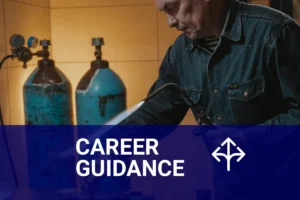How to Get Certified in Welding? Your Path to Certification, Steps, and Tips
Published on: December 5, 2024 | Last modified: March 4, 2025
By: Joe Carter
So, how do you get certified in welding? Well, it’s crucial to follow the right steps to ensure you’re qualified for jobs. I remember when I got my certification; it opened many doors in my career. Employers appreciate certified welders because they trust your skills and safety knowledge.
In this guide on how to get certified in welding, I’ll cover what certified welding is, different types of certifications, steps to get certified, safety tips, and common issues. You’ll learn about typical applications and advantages of certification too. If you’ve been wondering how to get your welding certification, you’ve come to the right place!
Contents
- How to Get Certified in Welding?
- What is Certified Welding?
- Types Of Certification in Welding
- Steps to Get Certified in Welding
- Safety Tips
- Types Of Welding Certifications
- Common Issues and Troubleshooting
- Why This is Worth It: Advantages Of Certification
- Typical Applications Of Certified Welding
- Other Options for Skill Enhancement in Welding Certification
- Welding Certification Timeline
- Frequently Asked Questions (FAQs)
- Conclusion
- Additional Reading
How to Get Certified in Welding?
A certified welder meets industry standards. To get certified in welding, choose a certification body like the American Welding Society (AWS). Complete training, pass a test, and consider real-world challenges like structural and pipe welding. It’s critical yet rewarding!
What is Certified Welding?
Certified welding refers to validating a welder’s skills and knowledge through a recognized program. This often involves passing rigorous tests and meeting specific standards set by organizations like the American Welding Society (AWS). Certification ensures that welders are proficient in their techniques and can produce welds that meet specific codes, such as those from the American National Standards Institute (ANSI). About 74% of employers prefer hiring certified welders, highlighting the importance of certification in the industry.
Now let’s discuss how to get certified in welding. You typically need to enroll in a training program or attend a workshop. I found that hands-on practice helped me grasp difficult concepts faster—being in the thick of it made a difference. It’s all about gaining experience and understanding the certification requirements.
I’ve heard from friends about their experiences obtaining welding certification. They attended local community colleges or specific training centers to take practical exams. A solid understanding of techniques and safety protocols is essential; my friends emphasized that hands-on practice made all the difference. They also explored multiple welding certifications to find the one that suited their career goals—you really need to find what fits you best!
Types Of Certification in Welding
What types of certifications are available for welders?
-
American Welding Society (AWS) Certifications
AWS certifications are industry-recognized and respected in the U.S. To gain an AWS certification, you must complete a written exam and a practical welding test. Start by finding an AWS testing facility, signing up, and studying AWS standards and techniques.
-
National Center for Construction Education and Research (NCCER) Certifications
NCCER certifications focus on standardized training for welders. To earn this certification, you must complete an NCCER-accredited training program, and coursework, and pass the assessment at your local facility.
-
Canadian Welding Bureau (CWB) Certifications
CWB certifications ensure high standards of welding quality in Canada. To achieve this certification, you must pass both a theoretical exam and a practical test. Start by contacting a CWB-recognized testing site and passing the necessary exams. To enhance your welding skills further, it is crucial to understand how to avoid spatter in welding, which can significantly improve the quality of your work.
-
International Institute Of Welding (IIW) Certifications
IIW certifications are globally recognized and align with international standards. To obtain IIW certification, you need to meet training and assessment requirements, generally by completing coursework through an IIW-accredited organization and passing their assessments.
-
Military and Government Certifications
These certifications are vital for welders on government projects. To get certified through military or government programs, you typically need to undergo specific training and pass their tests. Check with your military branch or local government projects for guidelines. Welding masks are essential for safety when working on these projects, and it’s important to know whether they can be used for unexpected tasks, such as viewing a solar eclipse.
We have now covered the different types of welding certifications. Next, we will examine the steps to achieve welding certification.

Steps to Get Certified in Welding
Here are the steps to obtain a welding certification effectively.
-
Choose Your Certification Type
Start by selecting the right welding certification. Different certifications, like AWS (American Welding Society) or API (American Petroleum Institute), target various industries. If you’re interested in working on pipelines, API might be your best choice. Consider that each certification requires different skills and training durations, so align your choice with your career goals.
This step is crucial because the right certification can open doors. Think about your local job market; some areas may value AWS more than others. If you know someone in the field, ask for their advice. Their experiences could save you time and effort. Protecting your vision is equally important in this profession, and understanding how welding affects eye safety is essential.
-
Enroll in a Welding Program
Next, enroll in a certified welding program. Look for schools or training centers accredited by organizations like AWS. Programs typically last from 6 months to 2 years, providing hands-on experience and theoretical knowledge. Choose one with strong industry connections; networking is invaluable. Check reviews or talk to alumni before deciding.
The skills you gain now will shape your career, so choose wisely to build a strong foundation for your welding expertise. It’s also crucial to be aware of safety measures and how to effectively treat flash burn in eyes from welding.
-
Accumulate Required Practice Hours
Accumulate the necessary welding practice hours. Most certification bodies require a minimum of 120 hours of practical experience. Aim for a mix of techniques like MIG, TIG, and Stick welding. Document all your hours and the types of welding practiced; this record will be crucial when applying for certification.
Dedicated practice is key. I’ve seen people rush through training and struggle later. Building muscle memory through consistent practice makes a significant difference. Make every hour count by honing your skills for various welding scenarios.
-
Pass the Certification Exam
Now it’s time to take the welding certification exam. It usually consists of both written and practical tests. Each state or certification body may have different rules, so familiarize yourself with them beforehand. Passing rates vary; for AWS, it’s around 70%. You’ll need to score in this range to obtain certification.
Passing this exam opens many doors. Pay attention to the areas your instructors emphasize during training; they’ll often appear on the test. Practicing old exams can give you a significant advantage, so don’t skip this step.
-
Renew Your Certification
Remember that welding certifications need renewal every few years. Depending on your certification type, you may have to retake the exam or complete additional training. For instance, AWS certifications often require proof of continuing education every three years to stay valid. Keep track of your certification’s status to ensure you’re always job-ready!
This step is often overlooked, but keeping your certification current ensures your skills are recognized in the workforce. I’ve missed renewal deadlines myself, which delayed my progress. Set reminders and stay proactive about your certification requirements!
You should now have a good understanding of the welding certification process, necessary qualifications, and resources available. In the next part, we’ll discuss safety precautions, best practices, and protective gear.
Safety Tips
Let’s look at precautions for getting certified in welding.
- Proper Eye Protection: Use lenses that meet ANSI Z87.1 standards. I prefer Miller safety glasses; they block 99% UV rays, ensuring eye safety.
- Ventilation: Always work in well-ventilated areas to avoid harmful fumes. Aim for at least 3 air changes per hour; consider using a portable extractor.
- Fire Safety Gear: Invest in flame-resistant clothing to reduce fire risks while welding. 100% cotton coveralls are a good option. I recommend Carhartt for durability.
- Hearing Protection: Use earplugs or earmuffs in noisy environments over 85 dB. 3M ear inserts can protect your hearing long-term.
Never underestimate safety in welding—I take these precautions seriously for myself and others.
So far, we covered safety precautions for welding. Next, let’s look at different types of welding certifications.
Types Of Welding Certifications
Let’s explore the various types of welding certifications, including Welder Certification, Procedure Qualification Record (PQR), Welding Inspector Certification, and Welding Educator Certification.
-
Welder Certification
This certification shows your ability to weld certain materials according to specific standards. Organizations like the American Welding Society (AWS) often require a test, which includes a hands-on welding assessment. You’ll receive a credential valid for 3 years upon passing.
-
Procedure Qualification Record (PQR)
A PQR documents specific welding procedures tested to meet job requirements. It demonstrates a welding procedure’s capability to produce a sound weld. Creating and qualifying these records can reduce rework on complex projects, potentially saving thousands.
-
Welding Inspector Certification
This certification shows you’re qualified to inspect welds and ensure they meet standards. Certifications like Certified Welding Inspector (CWI) require passing rigorous exams to assess your knowledge. Continuing education is often necessary to maintain this certification.
-
Welding Educator Certification
As a Welding Educator, you can train future welders. Certifications demonstrate your understanding of welding principles and your ability to teach others. Completing courses and passing exams will certify you in this essential role.
-
Specialist Certification
This certification covers unique welding techniques or processes, such as underwater welding. Specialist certifications enhance your skills and can lead to higher pay rates. From my experience, a specialist certification can unlock opportunities in niche fields!
Common Issues and Troubleshooting
Let’s examine unique issues facing the ‘certified’.
-
Certification Exam Failures
Certified welders often fail exams due to improper techniques. Record practice sessions to identify these issues. To improve, review and refine techniques with a mentor.
-
Lack Of Industry Recognition
Being certified doesn’t guarantee industry recognition. Job listings may favor specific certifications. Connect with industry networks and gather feedback on essential certifications.
-
Payment and Fee Discrepancies
Certified individuals often encounter fee discrepancies. If your certification payment receipt doesn’t match your bank statement, double-check with the issuing body. Keep accurate records for clarity.
-
Documentation Errors
Certified welders may find errors on their documents. Check for incorrect expiration dates or misprints. To resolve this, contact the certifying authority for corrections immediately.
-
Inadequate Preparation for Practical Tests
Certified individuals may struggle with practical tests if they’re underprepared. Assess your hands-on practice sessions to identify weaknesses. Increase practice time to at least 5 hours per week.
Why This is Worth It: Advantages Of Certification
The biggest advantage of getting certified in welding is that it opens doors. I’ve had friends tell me how it helped them land better jobs and higher pay.
Additionally, certification boosts your skills, enhances job security, and increases your professional credibility. It also allows you to specialize in specific techniques, making you more valuable to employers.
Typical Applications Of Certified Welding
I’ve seen people use certified welding for pipeline construction, but it has many applications, such as:
- Joyce Structures: Used in assembling complex structures, it ensures strong support and durability. It’s popular in construction, especially in skyscrapers.
- Automotive Manufacturing: Utilized for frame welding, high certification standards ensure safety and performance, making it a top choice in car manufacturing.
- Aerospace Industry: Essential for joining aircraft components, certification guarantees the highest safety standards, critical in this high-stakes field.
- Heavy Equipment Repair: Used for welding cracked machinery, certified welders provide reliable repairs, keeping heavy machinery operational and safe across industries.

Other Options for Skill Enhancement in Welding Certification
If you’re eager to boost your chances of certification, consider these options.
-
Online Training Programs
Many institutions offer online courses that cover welding theories and techniques. These courses can greatly enhance your understanding and prepare you for practical tests. Look for programs accredited by reputable organizations like AWS or NCCER. Mastering pipe welding techniques with electrodes like the 6010 is crucial for professional advancement, and you can find helpful resources on how to weld pipe with 6010.
-
Hands-On Workshops
Participating in hands-on workshops can provide invaluable real-world experience. These workshops often focus on specific skills or methods, helping you become more adept. Check local community colleges or welding schools for event schedules.
-
Internships or Apprenticeships
Consider seeking internships or apprenticeships. They give you practical experience while you learn from seasoned professionals in a real work environment. Many employers offer these programs, which may lead to job opportunities post-certification.
-
Study Groups
Joining or forming study groups can enhance your exam readiness. You can share knowledge, quiz each other, and discuss challenging theories. Learning with peers creates a supportive environment, boosting your confidence.
Welding Certification Timeline
Understanding the timeline for welding certification can help you plan effectively.
| Phase | Duration | Details |
|---|---|---|
| Training Program | 6 Months – 2 Years | Time varies by program; ensure it aligns with your goals. |
| Practice Hours | 120+ Hours | Hands-on practice builds essential skills before testing. |
| Exam Preparation | 1-3 Months | Review course materials and practice exams for success. |
| Certification Validity | 3 Years | Plan for renewal—consider ongoing education to maintain certification. |
Frequently Asked Questions (FAQs)
Now let us look at some common questions I typically get asked.
Which Welding Certification is Best?
Choosing the best welding certification depends on your career goals. The American Welding Society (AWS) offers various certifications; for example, Certified Welder (CW) is recognized widely. Typically, applicants pay around $300 for a test, and passing it boosts job opportunities.
What Credentials Do You Need for Welding?
For welding, you typically need a high school diploma or GED. Many employers prefer certified welders, particularly in specialized areas like underwater welding, which requires additional training and certification. These credentials significantly enhance your job prospects and earning potential. Mastering various welding techniques can further improve your career opportunities. If you’re keen to skillfully perform vertical welding tasks, obtaining specific expertise is crucial.
How Long Does It Take to Get Your CWI?
Becoming a Certified Welding Inspector (CWI) usually takes 7 to 9 months, including preparation time for the exam. Applicants need at least 5 years of experience and must pass a rigorous written exam covering welding fundamentals and codes, which requires commitment and dedication.
Is the Welding Exam Hard?
The welding exam can be challenging. It tests your knowledge of welding theories, practices, and safety standards. Many candidates study extensively, as roughly 50% pass on the first attempt. Preparation with hands-on practice and study materials helps increase your chances of success.
Where Can I Take a Welding Certification Test?
You can take a welding certification test at American Welding Society (AWS) accredited testing facilities. To find one near you, visit the AWS website. The costs vary by location but expect fees ranging from $150 to $500 depending on the type of certification sought.
How Do You Get Welding Certifications?
To get welding certifications, you first need to complete training from an accredited program. After that, you must pass the required welding test, which often includes both written and practical assessments. Investing in good training prepares you for the certification process.
Conclusion
I hope this gave you what you needed to feel confident about how to get certified in welding. We covered certified welding, types of certification, steps to get certified, safety tips, factors affecting certification, and even common troubleshooting issues. Plus, I touched on why this is worth your time and highlighted the typical applications of certified welding.
To sum it up, getting certified in welding involves meeting certain prerequisites and following a series of steps. You’ll need to understand different types of certifications and their applications. If you’re serious about your career, it’s worth the effort. Contact me if you’d like more guidance on how to get your welding certification.
For additional resources on welding techniques and practices, feel free to explore What is Welding.
Additional Reading
- American Society of Mechanical Engineers. (2019). ASME Section IX: Welding and Brazing Qualifications. New York, NY: ASME.
- Blodgett, O. W. (1996). Design of Welded Structures. Cleveland, OH: James F. Lincoln Arc Welding Foundation.
- Cary, H. B., & Helzer, S. C. (2005). Modern Welding Technology (6th ed.). Upper Saddle River, NJ: Pearson.
Joe Carter is a retired welding professional with over 40 years of hands-on experience in the industry, spanning ship repair, structural welding, and even underwater projects. Joe is a master of MIG, TIG, and Stick welding. Passionate about mentoring the next generation of welders, Joe now shares his decades of expertise and practical insights to help others build rewarding careers in welding.
American Welding Society, AWS Certification, Pipe Welding, Safety In Welding, Safety Tips, Types Of Welding Certifications, Welding, Welding Certification, Welding Exam Preparation, Welding Techniques, Welding Training







